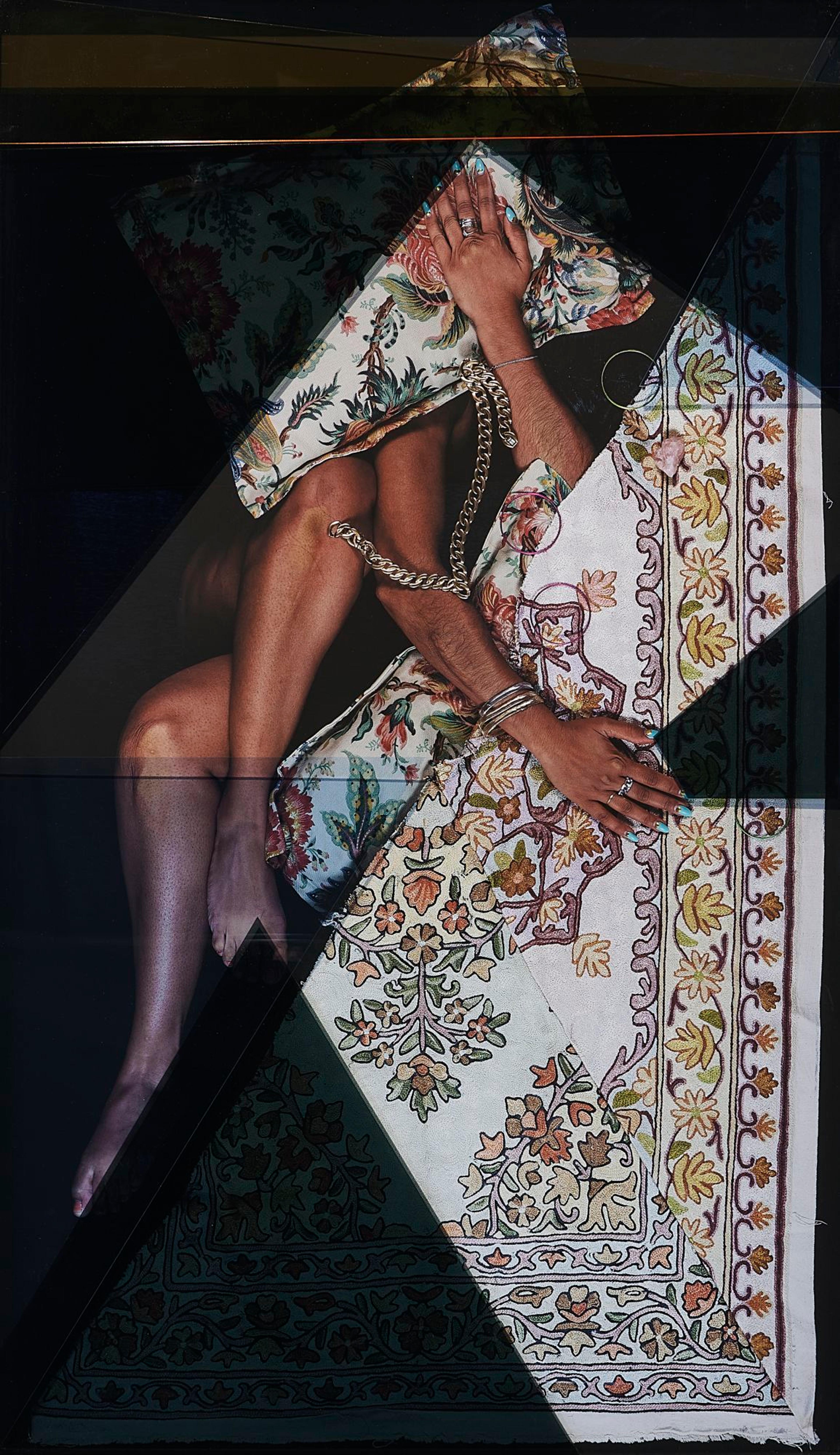Baseera Khan: I Am an Archive
1 of 9
Baseera Khan: I Am an Archive is presented as part of the UOVO Prize for an emerging Brooklyn artist. Baseera Khan uses their own body as an archive, often employing a variety of multimedia collage techniques to visualize the lived experiences of people at the intersections of Muslim and American identities, both today and throughout history. The exhibitiondebuts eleven new artworks, in conversation with key works made since 2017, that explore Khan’s body as a site of accumulations of experiences, histories, and traumas.
On view are rich and multilayered sculptures, installations, collages, drawings, photographs, textiles, and a video in which Khan investigates othering, surveillance, cultural exploitation, anti-blackness, and xenophobia within our public and private spaces—and proposes avenues for protection and liberation. The works express Khan’s interest in revealing the economics of goods and materials—such as oil, hair, architecture, and art—as commodities that create inequalities and otherness and that are historical and contemporary drivers of global change.
Khan is the recipient of the second UOVO Prize, which recognizes the work of emerging Brooklyn artists. As part of the prize, they receive a solo exhibition at the Brooklyn Museum, a commission for a 50x50-foot art installation on the façade of UOVO's Brooklyn facility, and a $25,000 unrestricted cash grant. The mural is currently on view.
Baseera Khan: I Am an Archive is curated by Carmen Hermo, Associate Curator, Elizabeth A. Sackler Center for Feminist Art, Brooklyn Museum.
The UOVO Prize is made possible by
Major support for this exhibition is provided by the Brooklyn Museum's Contemporary Art Committee.
Organizing department
Elizabeth A. Sackler Center for Feminist Art








